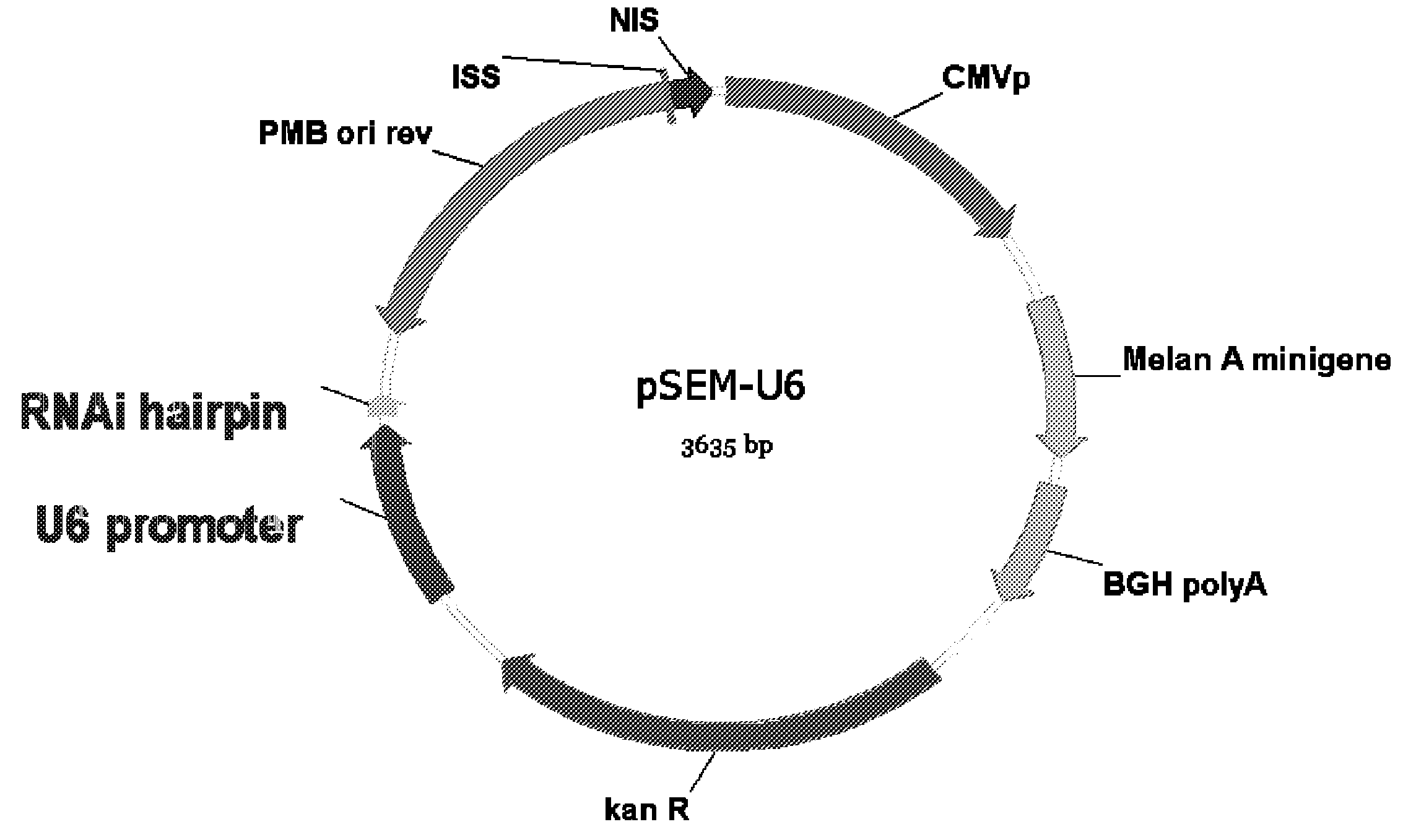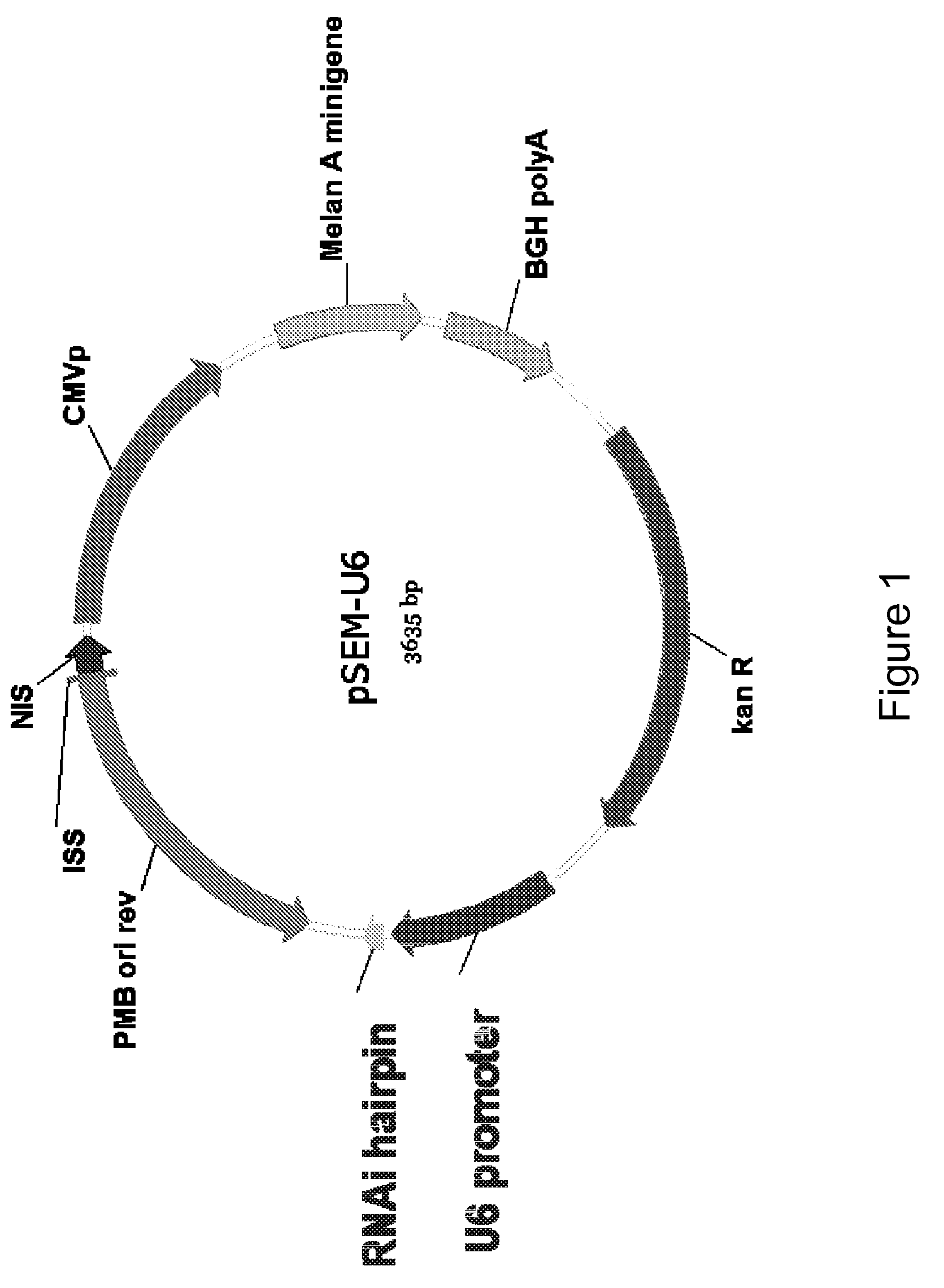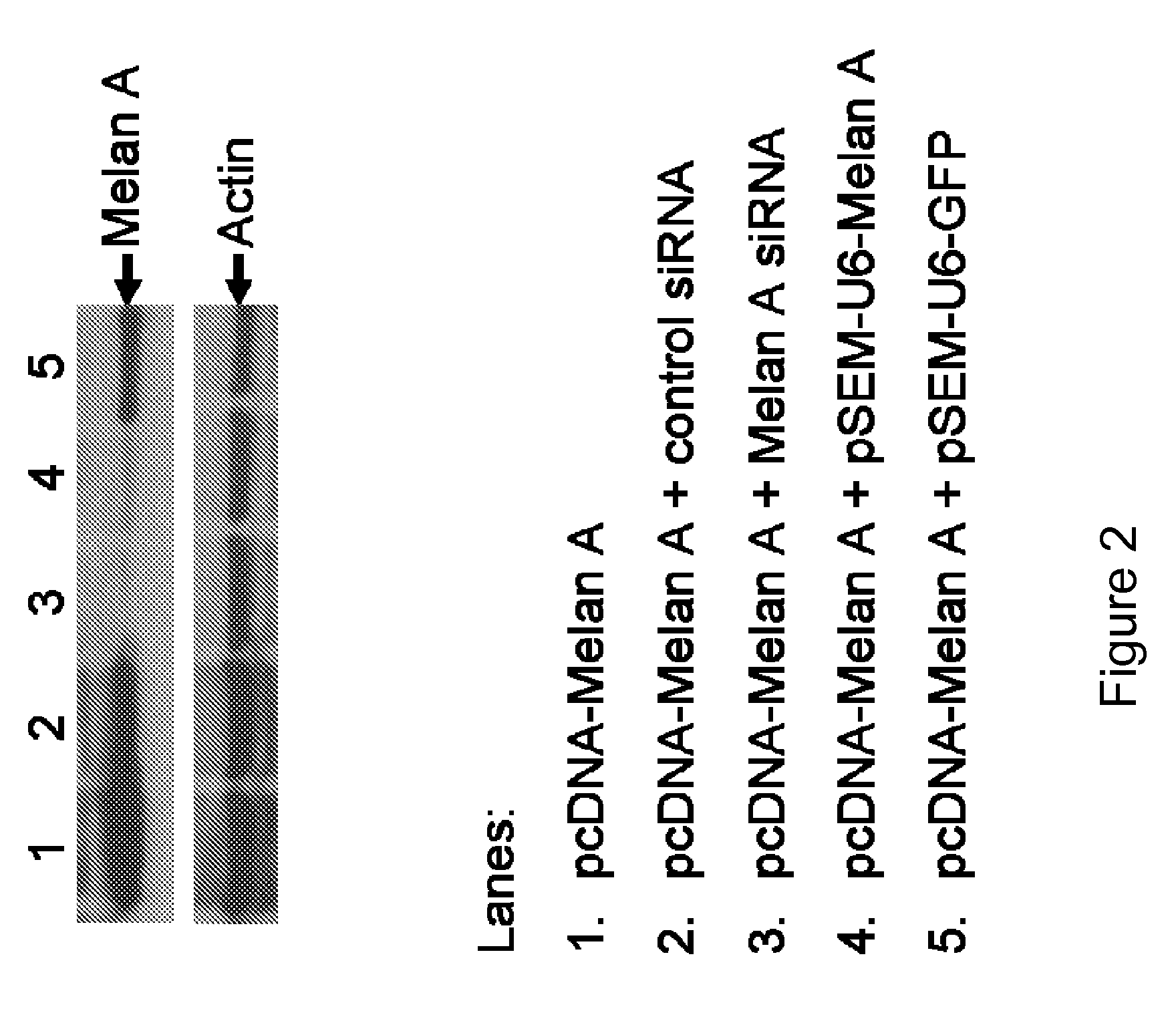Multicistronic vectors and methods for their design
a technology of multi-cistronic vectors and vectors, applied in the field of multi-cistronic vectors, can solve the problem of human efficacy remaining at issu
- Summary
- Abstract
- Description
- Claims
- Application Information
AI Technical Summary
Benefits of technology
Problems solved by technology
Method used
Image
Examples
example 1
Design and Construction of Bicistronic Vectors Co-Expressing Immunogene and RNAi
[0126]The structure and construction of pSEM plasmid (also known as pMA2M) has been previously disclosed (US Patent Application Publication 20030228634 and PCT Patent Publication WO 03 / 063770). Briefly, the pSEM plasmid encodes one polypeptide with an HLA A2-specific CTL epitope ELAGIGILTV (SEQ ID NO. 1) from Melan-A26-35 A27L, and a portion (amino acids 31-96) of Melan-A (SEQ ID NO. 2) including the epitope clusters at amino acids 31-48 and 56-69. These clusters were previously disclosed in U.S. patent application Ser. No. 09 / 561,571, filed Apr. 28, 2000 entitled EPITOPE CLUSTERS, which is incorporated herein by reference in its entirety. Flanking the defined Melan-A CTL epitope are short amino acid sequences derived from human tyrosinase (SEQ ID NOs: 3 and 4) to facilitate liberation of the Melan-A housekeeping epitope by processing by the immunoproteasome. In addition, these amino acid sequences repre...
example 2
In Vitro Knock Down in an Overexpression System
[0128]HEK 293T cells were transfected with a Melan-A-expressing plasmid pcDNA-Melan-A alone, or co-transfected with pSEM-U6-Melan-A, pSEM-U6-GFP, siRNA for Melan-A, or control siRNA, respectively. Forty-eight hours post transfection, cells were harvested and cell lysates were prepared and subjected to SDS-PAGE and immunoblot. The knock down effects of various siRNAs and bicistronic plasmids were evaluated (FIG. 2). Co-transfection of siRNA specific for Melan-A resulted in a significant decrease in the level of Melan-A expression in transfected cells, with the knock down effect being over 90%. In cells co-transfected with pcDNA-Melan-A and pSEM-U6-Melan-A, the knock down effect on Melan-A expression is estimated to be between 80-90%. A slight reduction in Melan-A expression level was also observed in samples from cells co-transfected with Melan-A-expressing plasmid and pSEM-U6-GFP, or control siRNA, respective.
example 3
In Vivo Knock Down of Antigen Expression Leads to an Abolished Immune Response
[0129]Five groups of HHD transgenic mice (n=10 / group) were immunized with plasmids (pSEM, pSEM-U6-GFP, pSEM-U6-Melan-A) by direct injection into the inguinal lymph nodes of 25 μg in 25 μl of PBS to each lymph node on day 1 and 4. Mice received a second cluster of DNA injections ten days after, at day 11 and day 14, and injection of Melan-A26-35 A27L peptide (1 mg / ml) at day 34 and 37 (FIG. 3). Peripheral blood was isolated from individual mice via retro-orbital bleed and mononuclear cells were separated from red blood cells following density centrifugation (Lympholyte Mammal, Cedarlane Labs). The specific CTL response in immunized animals was quantified by co-staining mononuclear cells with HLA-A2.1 MART-126-35 (ELAGIGILTV)-APC, and FITC conjugated rat anti-mouse CD8a (Ly-2) monoclonal antibody (BD Biosciences) for 1 hour at 40° C. Data were collected using a FACS Calibur flow cytometer (BD Biosciences) an...
PUM
| Property | Measurement | Unit |
|---|---|---|
| humidity | aaaaa | aaaaa |
| humidity | aaaaa | aaaaa |
| size | aaaaa | aaaaa |
Abstract
Description
Claims
Application Information
 Login to View More
Login to View More - R&D
- Intellectual Property
- Life Sciences
- Materials
- Tech Scout
- Unparalleled Data Quality
- Higher Quality Content
- 60% Fewer Hallucinations
Browse by: Latest US Patents, China's latest patents, Technical Efficacy Thesaurus, Application Domain, Technology Topic, Popular Technical Reports.
© 2025 PatSnap. All rights reserved.Legal|Privacy policy|Modern Slavery Act Transparency Statement|Sitemap|About US| Contact US: help@patsnap.com



